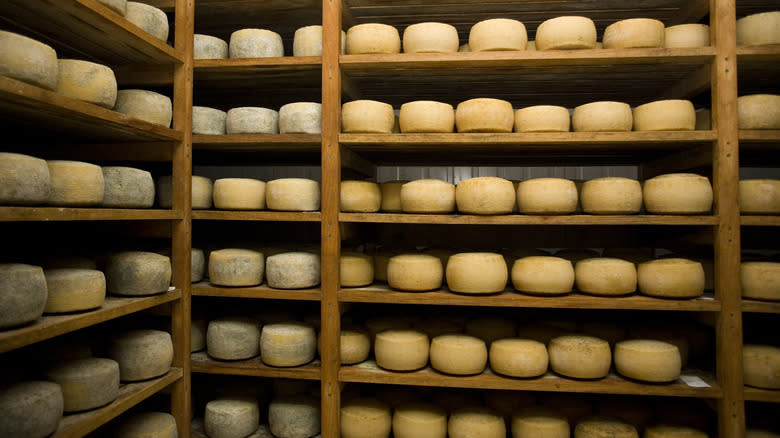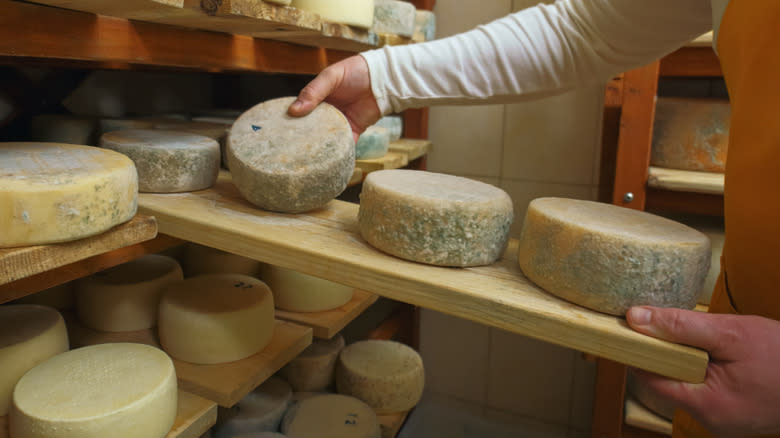The Important Safety Reason Cheese Is Often Made In Wheel Form

Have you ever wondered why you've always seen cheese "wheels" but never cheese boxes? It's not a bad question — and we're sure you wouldn't be the first to wonder this as you browse through the dairy aisle at your local grocer. From cheddar to the more gourmet Pecorino Romano, just about every cheese is pressed into huge circular blocks.
The tradition of wheel-shaped cheeses dates back centuries, and at first, it mostly came down to practicality. Instead of having to lug around an 84-pound block of Parmigiano Reggiano, for instance, if you pressed it into wheels, you could simply roll it from place to place. When someone wants to buy a piece, they can slice out a wedge. The wheel shape made transportation much easier in the days before forklifts.
But there's another reason behind this age-old practice that has persisted to this day: safety. The wheel shape allows a tough, protective rind to form around the outer layer of the cheese as it ages. This rind acts as a suit of armor for the cheese, shielding the delicate interior (the paste) from contaminants, like bacteria, dirt, and dust.
Read more: What Happens If You Accidentally Eat Mold?
A Box-Shaped Cheese Will Have A Less Protective Rind

If you peer closely at a slice of cheese rind under a microscope, you'll find a world of life -- billions of microbes and bacteria call this home. These tiny residents (that are safe to eat) aren't just along for the ride; they play a crucial role in the formation and final flavor of the cheese (and its rind). The key to developing a good, evenly distributed cheese rind lies in ensuring an even gradient of these microbes throughout.
When cheese is pressed into shapes with sharp edges or corners, like a box, the bacteria tend to congregate in those areas instead of spreading out evenly. This can result in a weaker, less protective rind in other parts of the cheese. An uneven distribution of bacteria can also lead to overripening, particularly around the edges, causing those areas to become excessively salty. That's why the traditional wheel shape is so commonly used -- it allows for a smooth, even rind to form.
Of course, there are always exceptions to the rule. Some cheeses, like Wisconsin brick cheese, are indeed pressed into rectangular brick shapes. But they are outliers for the most part. Wheels aren't just the traditional shape but the most optimal, too!
Read the original article on Tasting Table

